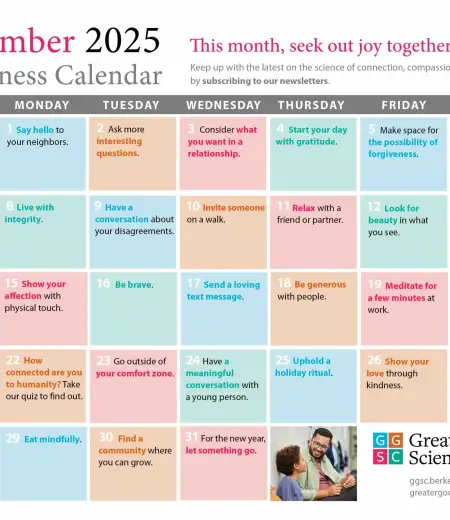When your romantic partner is feeling down or in pain, there are many ways for you to respond. Maybe you’ll try to distract them or tell a joke. Or, perhaps you’ll listen to them empathically or offer different perspectives on their situation.

These are all examples of what researchers call “extrinsic emotion regulation”—helping another to deal with their difficult emotions (as opposed to managing your own). Helping others with their distress can bring you closer together and is tied to happier, stronger relationships.
But what strategies work best? Do some benefit your relationship more than others? Sarah Walker of the University of Sydney and her team aimed to find out in a series of studies.
What strategies work best?
In one study, she and her colleagues asked 277 coupled adults of various ages (most in heterosexual partnerships) to report on how much they try to help an upset partner by using one of eight emotion-regulation strategies:
- Expressive suppression: asking your partner “to put a brave face on” and not express feelings.
- Distraction: taking your partner’s attention away from what’s bothering them.
- Downward social comparison: encouraging your partner to realize they don’t have it as bad as someone else.
- Receptive listening: letting your partner talk about what’s bothering them without judgment or advice.
- Humor: showcasing the humor in their situation to make your partner laugh.
- Reappraisal: helping your partner to see their situation in a different light.
- Valuing: letting your partner know how important they are to you.
- Direct action: providing a solution for what’s bothering your partner.
They also asked participants to rate their overall relationship satisfaction, and then compared what strategies people used most often with those satisfaction scores.
They found that partners who used humor, receptive listening, and valuing were most satisfied with their relationships, while using distraction, direct action, and reappraisal had only a weak association with satisfaction. Using downward social comparisons or emotional suppression seemed to be the losing strategies, with no positive effect on relationship satisfaction.
“The things that we do to try and make people feel better have implications beyond making them feel better,” says Walker. “They also influence your relationship quality with those people.”
However, these initial findings focused on only one member of the couple—the person trying to help their partner. So, Walker and her colleagues looked at how using certain strategies affected the view of the person being helped, too.
Couples need to agree on strategies
In another study, the researchers surveyed 395 couples, with one member of the couple assigned to report on emotion-regulation strategies they used to help a partner feel better and the other member reporting on what they thought their partner did to help them. Then, researchers asked both partners about how happy they were with the relationship.
In this study, all of the strategies were tied to greater relationship satisfaction, regardless of gender— except for expression suppression, which was tied to less satisfaction in both members of the couple. However, if both members of the couple agreed that expression suppression was being used to help, even that was tied to relationship satisfaction.
“It’s not what we think we’re doing to make someone feel better that matters [for relationship happiness]. It’s how our partner perceives our attempt to make them feel better that impacts them and ourselves,” says Walker.
What might this look like in real life? Walker gives an example: Suppose your partner is upset and you decide to tell them a joke to help them feel better. You may feel more satisfied with your relationship because you cared enough to help them. But, if your partner doesn’t realize what you were doing, or they weren’t receptive to your joke at the time, they will not feel better about the relationship, which then affects both of you.
“If I’m angry and my husband tells me a joke, I may feel like he’s making light of the situation. However, if I’m angry and he makes me feel better by listening, once I’m less angry, he could tell a joke at the expense of whatever’s making me upset, and I might find that funny,” says Walker. “There’s a process involved and being in synch is important. The strategy itself may not matter as much.”
Walker’s research is ongoing, and there is still a lot to uncover. For example, her findings to date can’t tell us exactly what causes what. It could be that people who listen and express appreciation for their partners become happier in their relationship, or it could be that people in happy relationships are more willing to listen and show gratitude toward each other. It could be that people are more in synch because their relationship is happy or it could be that they become happier as they synch up.
Walker hopes to tease this out more by studying extrinsic emotion regulation strategies experimentally. For example, she and her colleagues will be by observing how people try to alleviate suffering in a partner who is in pain (induced in the lab) and see how that relates to relationship satisfaction. She will also continue to gather data over time in the second study to see the longitudinal effects of using different strategies on couple happiness—as well as conducting new experiments on this “highly-understudied” phenomenon.
Based on what she’s learned so far, though, Walker suspects that certain strategies—in particular, receptive listening and valuing—could be the most winning strategies for couples. She hopes to learn more about the whole the process of helping others manage their emotions so that anyone can have happier, healthier relationships.
“If we know what things work to make our partners feel better—and not just our [romantic] partners, but our friends, our work colleagues—we can have more relationship satisfaction in our lives,” she says.









Comments